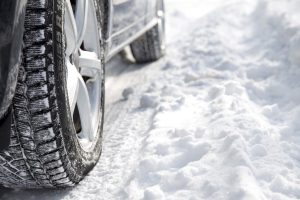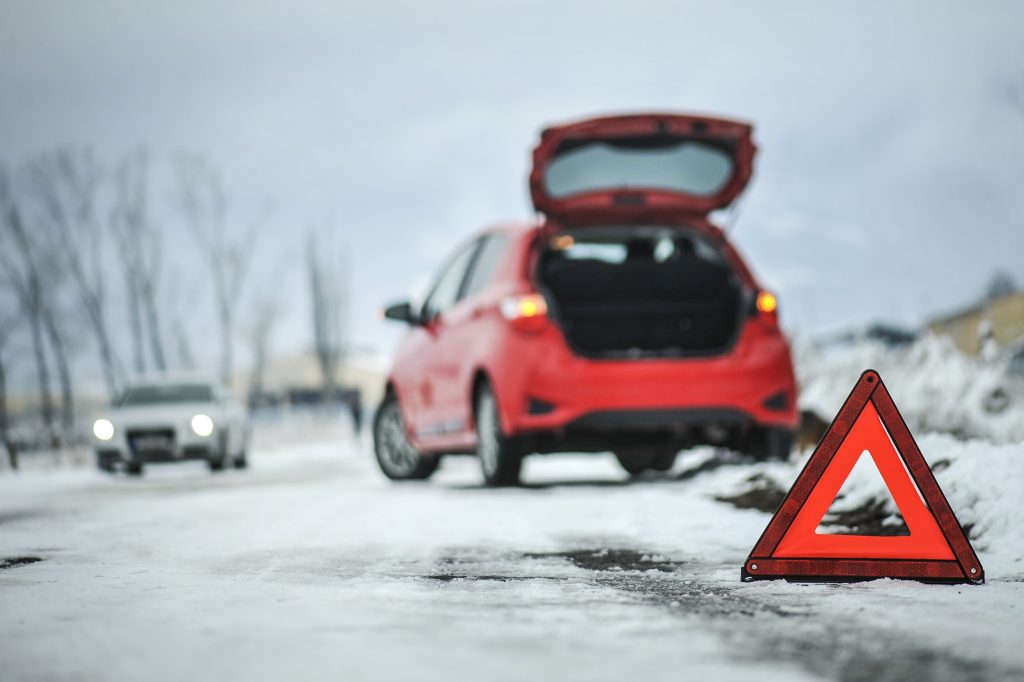
When we think of winter driving, many of us automatically imagine driving in the snow. However, snow should not necessarily be your primary focus — especially in Maryland. While we DO have snow events, it’s more likely the harsh winter conditions we’ll face on the roads involve excessively cold temperatures and the potential for ice. These tips will ensure you are prepared for winter weather driving and the possibility of a roadside emergency during the winter months.
Caution: Bridge Freezes Before Roadway
We’ve all seen the signs warning us that cold temperatures will impact bridges first, but do you know the reasons why?
- Bridges are generally exposed to the elements from all sides;
- Bridges lack the presence of soil that provides insulation for road surfaces;
- Bridges often are positioned over bodies of water or other cold spots; and
- Bridges are constructed of metal and concrete, which do not allow for heat retention.
As a result, bridges are likely to freeze shortly after the outside temperature falls below freezing. This can create dangerously slick conditions, even when the rest of the road is fine.
Black Ice
While most roadway surfaces are well insulated by the surrounding soil, as well as the heat-retaining properties of asphalt, sustained cold temperatures and precipitation can eventually lead to the development of another dangerous road hazard: black ice.
The thin coat of transparent ice that forms on roadway surfaces is given the name “black ice” because it blends in with the surface of the road and is nearly impossible to see. It is caused when water on wet roadways freezes when the temperature drops as the sun sets.
The danger of black ice is that you often don’t know it’s there until your car begins to slide. If you do find yourself in a situation with black ice, remain calm and follow these tips:
- Remove your foot from the accelerator and allow your car to slow to a stop on its own to the extent possible.
- Do not hit the brakes because it will likely cause you to skid. Patches of black ice are usually less than 20 feet long. While you may not be able to see the black ice, you might be able to head toward areas that can provide traction, such as sanded or salted areas, snow-covered areas, etc. If you do find yourself going off the roadway, try to steer toward an area that will cause a minimum amount of damage: an empty field, a yard, or a fluffy snowbank.
- Keep the steering wheel as straight as possible. If you feel the back end of your car sliding, turn the wheel gently in the same direction. Struggling against a slide by turning in the opposite direction may cause you to skid or spin out.
If you do skid or lose traction, remain calm. Black ice is generally patchy, and your tires will soon regain traction. Brake as little as possible, but if you need to use the brake, consider the following:
- If you have an anti-lock braking system (ABS), apply steady pressure and the car will pump the brakes for you as you skid.
- If you don’t have ABS, pump the brakes gently.
- Always steer in the direction you want the car to go.
In black ice conditions, it may be wise to wait until conditions improve to drive. If you aren’t close to home, stop to wait at a store, rest area or parking lot.
In the Event of a Crash
In the unfortunate event of a crash, you must evaluate your options quickly to ensure the safety of yourself and any passengers.
If you can remain in your vehicle, staying buckled up and facing forward is often the safest option. If your vehicle is in the roadway and has the potential to be hit by other vehicles, it may be safest to exit and move quickly away from the vehicle to an embankment or behind a guardrail. You will need to consider multiple factors: whether you can safely exit the vehicle without placing yourself in additional danger, whether the conditions will allow you to walk safely away from the vehicle and whether you are prepared to wait safely outside in whatever weather conditions are present.
Be Prepared for A Roadside Emergency
 At some point, nearly every motorist will experience a roadside emergency; however, being prepared for potential roadside emergencies in all weather conditions is something that many drivers overlook. It is especially important to prepare for the possibility of winter roadside emergencies, as being stranded on the roadside in extremely low temperatures could be potentially life-threatening.
At some point, nearly every motorist will experience a roadside emergency; however, being prepared for potential roadside emergencies in all weather conditions is something that many drivers overlook. It is especially important to prepare for the possibility of winter roadside emergencies, as being stranded on the roadside in extremely low temperatures could be potentially life-threatening.
During winter months, ensure you maintain at least half a tank of gas. Check your windshield washer fluid regularly and fill it with a winter blend designed to prevent freezing. Prepare a roadside emergency kit, with the following items:
- Jumper Cables
- First-Aid Kit
- Bottled Water
- Non-Perishable Food Items
- Multi-Tool
- Road Flares or Reflective Warning Triangle
- Flashlight with Extra Batteries
- Ice Scraper/Snow Brush
- Blanket/Gloves
- Small Portable Shovel
- Sand/Salt or Cat Litter (for traction)
These items should be stored in a sealed tote and checked/refreshed on a regular basis.
Preparation is the Best Prevention
The best way to avoid experiencing a winter driving event is to ensure that you are prepared in advance. Check the weather before heading out. If the forecast is poor and local agencies advise against travel, take that advice if possible and stay home. Not only does this save you from potentially dangerous weather, but it also assists road crews and emergency responders who must be out on the roads.
If you must travel, ensure that you have a winter emergency kit prepared and your car is kept in good working order. Regular maintenance goes a long way toward keeping you from experiencing a roadside emergency.
Be The Prepared Driver this winter and keep yourself and others safe on the road.